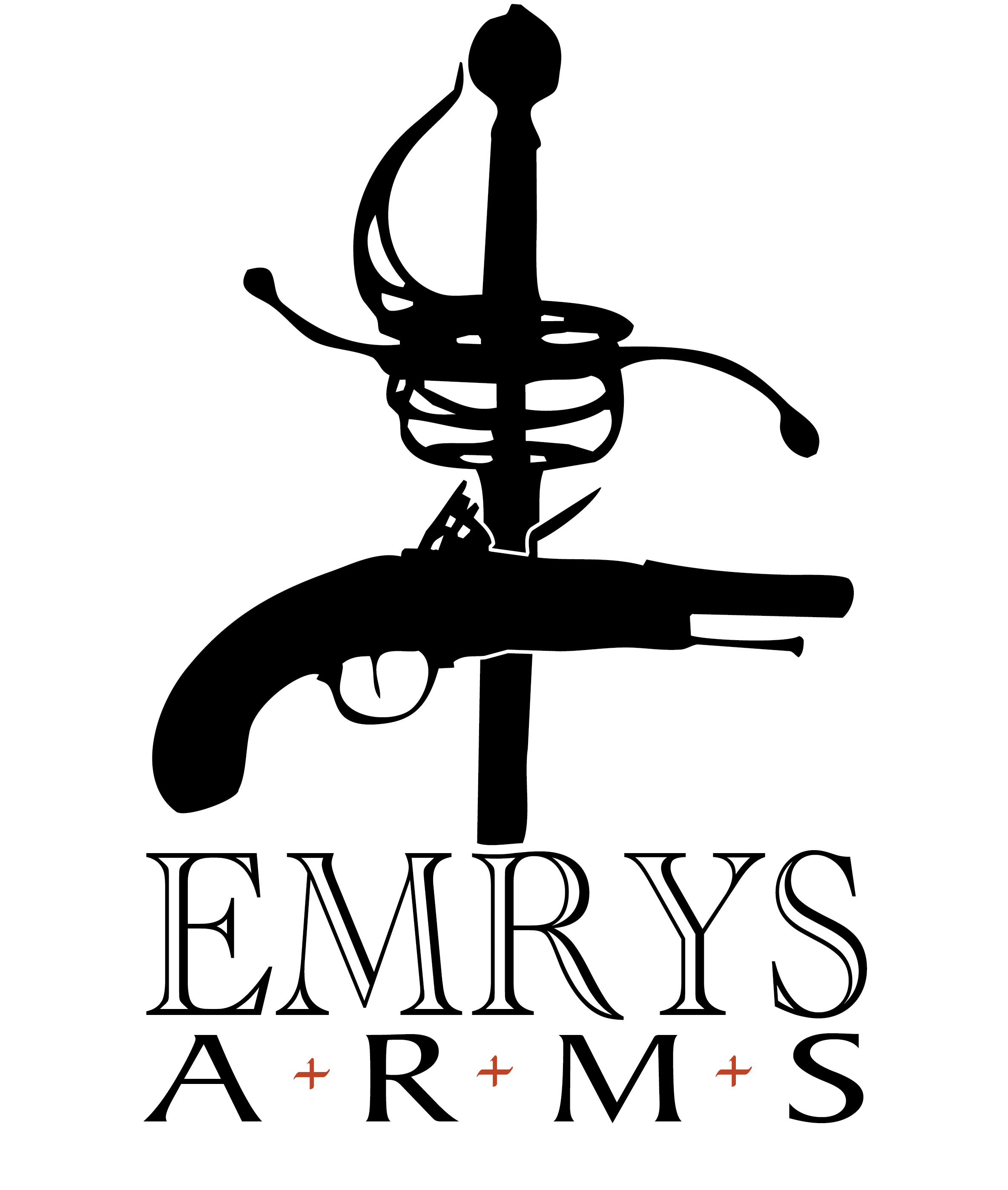| Collection #: | 2020.038 |
|---|---|
| Type: | Backsword |
| Nationality: | British / Commonwealth |
| Pattern: | Pre-regulation Dragoon Officer’s Sword |
| Date: | 1760 - 1785 |
| Hilt: | Half Basket |
| Blade Length: | 85.5cm (33.67") |
| Blade Width: | 3.5cm (1.38") |
| Overall Length: | 102.5cm (40.35") |
| Maker: | Harvey inscribed horizontally across the blade in quasi-fancy script |
| Blade Markings: | No other discernible markings |

A British dragoon officer’s sword with a date range of 1760 – 1785, according to various authors. It is the precursor officer’s version of the 1788 Pattern heavy cavalry sword.
For. a complete description of the guard, I will refer to Cyril Mazansky’s description in his book British Basket Hilted Swords as it corresponds exactly to this example in form, but not in materials – which shall be noted in square brackets. That sword is based on an example in the Royal Collection, Windsor Castle Laking no. 778 which specifically dates to 1765 – 1785.
This one-third basket steel [ our example is brass, not steel ] hilt is based on a stool [ or shell-guard ] formed of two scallop-like shells similar to those of type IIIA1 [ reference to another pictorial example in his book – page 206] but smaller. The inlets between the shells are filled with the roots of the knuckle-guard and rear quillon, thus forming an approximately oval stool. In front of the index finger at the root of the knuckle-guard is a pierced cockle-shell of four rays flanked on each side by a C-shaped bar. The main knuckle-guard arises from this and is attached to a ring under the pommel which in this example is type II [ bun shaped pommel ] decorated with curved flutes. Two deeply recurved loop-guards link the main knuckle-guard with the edge of the stool. A small curved bar in turn links the two looped-guards to each other, a second one links the forward loop-guard to the small C-shaped bar and a third one connects the rear loop-guard near its end to the pommel-ring.
Mazansky Page 207.
There are several other swords in the Windsor Castle collection which also have a similar description with, perhaps, minor design differences.
To further describe this example, the brass guard was once covered in gold gilt. About 70% of the gilding remains. The grip is in undamaged condition and made up of white fish skin wrapped with tightly braided silver wire. The grip is bordered at each end by a 0.6 cm banded ferrule.
The blade measures 33.8 cm long and 3.5 cm at the ricasso. It has modest darkening to about 50% of the blade. The main wide fuller begins 11.5 cm from the guard and carries through right to the tip, possibly indicating the blade was slightly longer at some point. A narrower fuller begins at the same point as the wide fuller and is nestled in between the wide fuller and the back of the blade. It terminates 26.5 cm from the tip. The only making to the blade is the maker’s name on the left side of the ricasso which reads “HARVEY” in a quasi-fancy script. This is the only example I have seen of Harvey being marked this way as HARVEY stamped into the blade or SH inside a running wolf/fox is more common.
The two most likely makers are George Harvey who seems to have been temporarily in business from 1776 – 1781 or (more likely) Samuel Harvey 1747 – 1800(?), possibly multiple generations. – Langham’s British Sword Research
Read the full accounts of what these authors have recorded, plus some other research or references on this pattern:
Mazansky, C. (2005) British basket-hilted swords. The Boydell Press in association with The Royal Armouries, Suffolk, UK.
For further visual research, feel free to look up the following books for photos of other examples of this sword.
An example of similar design elements, but not quite as embellished, possibly carried by the Horse Grenadier Guards 1763-1788.
Pictorial examples of similar designs with different embellishments.
Example 275.S, identified as an English Horseman Saber with an iron hilt circa 1760-1780.
Black and white image of an example with a steel hilt retaining its inner hilt liner, sword knot and scabbard.
Example with steel guard noted to be a c.1780 heavy cavalry officer’s sword.

